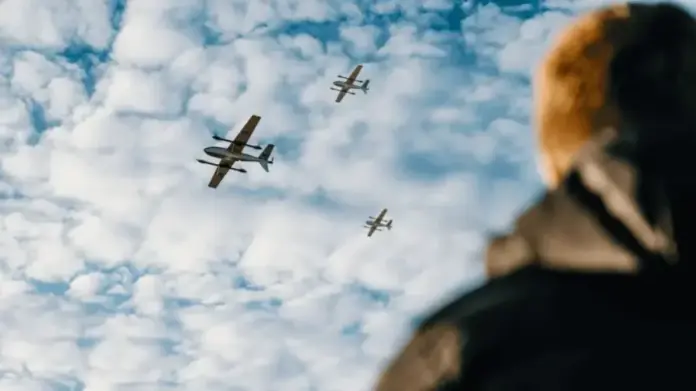Norway has become the first NATO member to field an operational autonomous drone swarm. The Norwegian Army officially received its first Valkyrie system on October 16, during the LandX exercise organized by the Norwegian Defence Research Establishment (FFI). The annual event promotes military innovation through direct collaboration between researchers and soldiers.
“It is also necessary to have systems capable of intercepting such drones — in other words, shooting them down,” recently acknowledged Moldova’s Minister of Defense, Anatolie Nosatii.
A Milestone for NATO’s Drone Technology
This deployment marks a major milestone for NATO as the European Union advances its “drone wall” defense initiative and Ukraine continues to prove the combat value of swarm coordination — a strategy that boosts battlefield efficiency without increasing personnel.
Unlike the U.S. Replicator program, which has faced financial and technical delays, Norway’s approach embeds developers directly within military units, allowing real-time testing and rapid technological refinement.
Six Robotics developed the Valkyrie system in partnership with FFI, applying an agile methodology that challenges the West’s traditionally slow procurement cycles. Earlier in October, the Norwegian Army selected the company for a pilot program to expand the technology to multiple units, including testing in military schools and maneuver formations.
“The swarm we are delivering is a product in continuous development. We’ll keep adding functionalities and updating the software based on the Army’s feedback,” said Dr. Jan Dyre Bjerknes, Chief Technology Officer at Six Robotics.
He stressed the importance of proximity to users:
“If you’re not near those who actually use the product, you risk building something useless. We must see what works in practice — not just in theory.”
FFI Deputy Director Jan Erik Torp called the investment part of an ongoing technological race:
“It’s essential not to fall asleep at the wheel. Continuous development with direct user involvement is the only way to build modern military equipment.”
The Valkyrie System: Intelligence, Surveillance, and Reconnaissance
The Valkyrie platform supports complex intelligence, surveillance, and reconnaissance (ISR) missions. A single operator can coordinate multiple autonomous drones — directly addressing NATO’s concern over a shortage of qualified personnel.
The Norwegian Army has already tested the system in joint exercises with Sweden and Finland, confirming its interoperability with allied forces. While technical details remain classified, officials say the system integrates with existing military infrastructure and can adapt quickly to evolving threats.
Over the coming months, Six Robotics will deliver additional Valkyrie units and train soldiers to operate them. Continuous field testing will refine both hardware and software, cutting development cycles from years to just a few months.
Rising Drone Threats Across Europe
The rollout coincides with an increase in drone-related security incidents across Europe. In September and October 2025, unidentified drones disrupted operations at several Scandinavian airports and flew over military facilities in Denmark, Norway, and Poland — incidents widely linked to Russian hybrid operations.
For the first time since the invasion of Ukraine, NATO forces shot down Russian drones that violated Polish airspace. These events have revived Europe’s long-delayed “drone wall” initiative — a network of detection and interception systems along the EU’s eastern border. The Baltic states have already allocated tens of millions of euros for anti-drone technologies.
Does Moldova Have Drones?
In spring 2025, Lithuania donated 100 drones to the Republic of Moldova as part of a military assistance package. Defense Minister Anatolie Nosatii said the drones would strengthen surveillance operations and enhance reconnaissance capabilities, though he did not disclose the total number of drones in Moldova’s inventory.
On October 25, Nosatii outlined Moldova’s plans for a “complex airspace monitoring architecture”:
“It is necessary to have systems that allow interception — in other words, neutralization. We’ve drafted legislation on air defense coordination between state institutions to ensure public safety and authorize the military to use their equipment to intercept or neutralize illegal aerial targets. We’ve already procured some systems and will continue to do so. However, these technologies are costly. For now, airspace security remains a top priority in Ukraine.”
Anatolie Nosatii also emphasized Moldova’s commitment to defense cooperation:
“Since the beginning of my term, I have worked to build friendships. Neutrality does not mean isolation — we must develop our defense capabilities. Cooperation with international institutions such as the EU and NATO, as well as bilateral partnerships with strategic allies, has accelerated the modernization and transformation of Moldova’s Armed Forces.”



